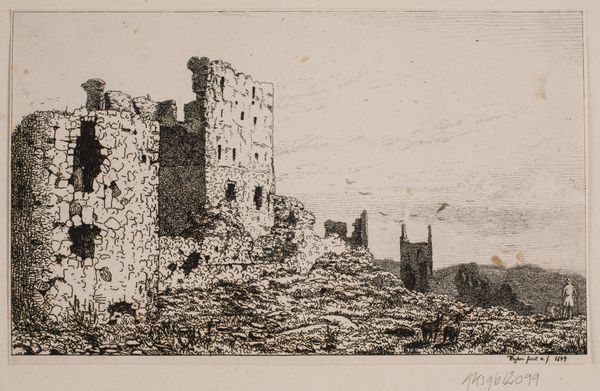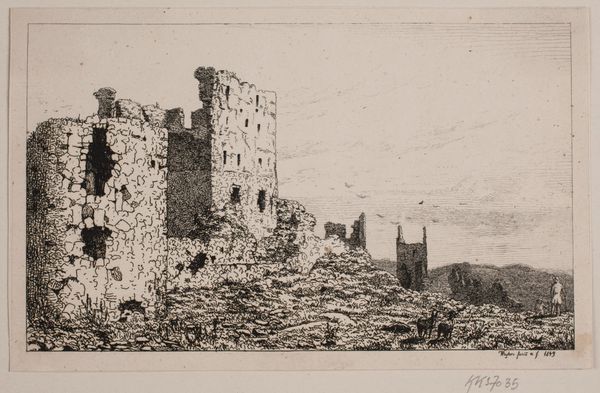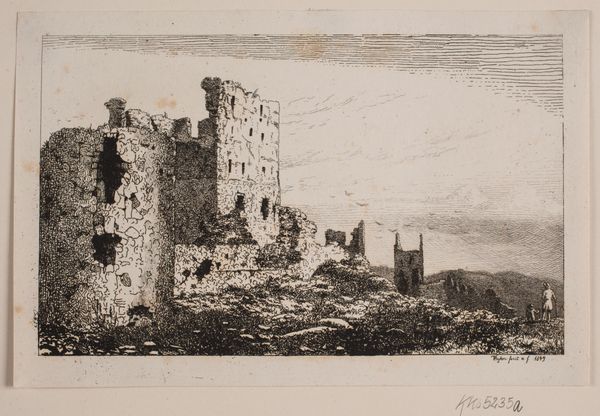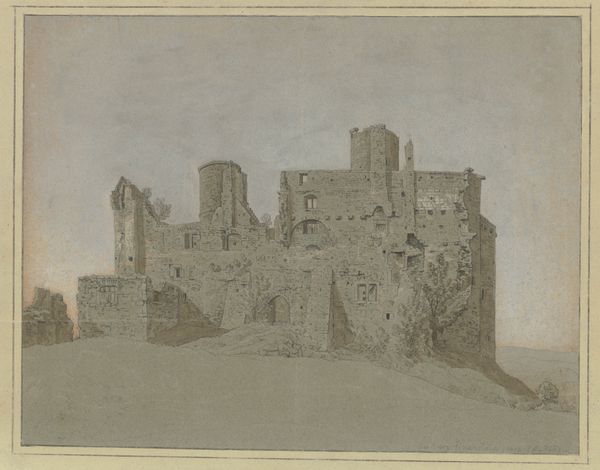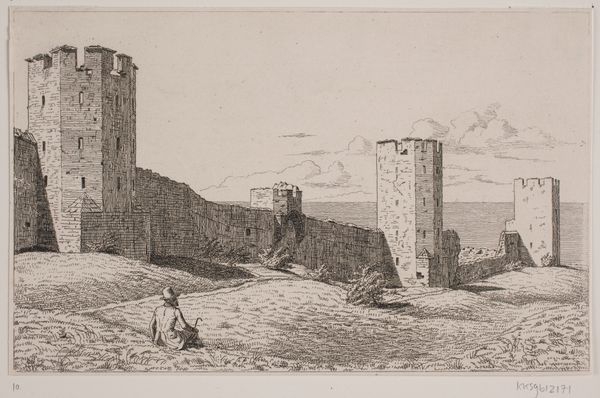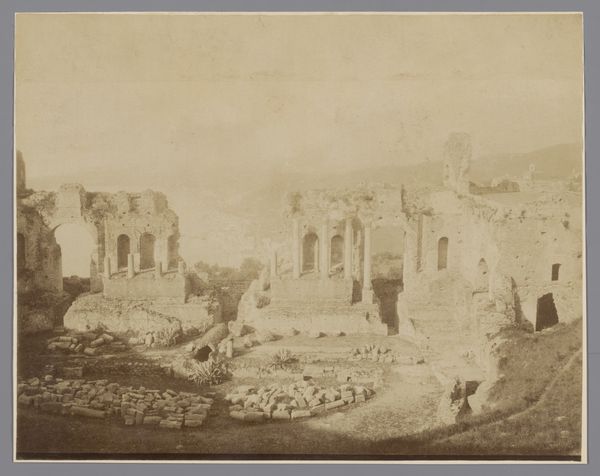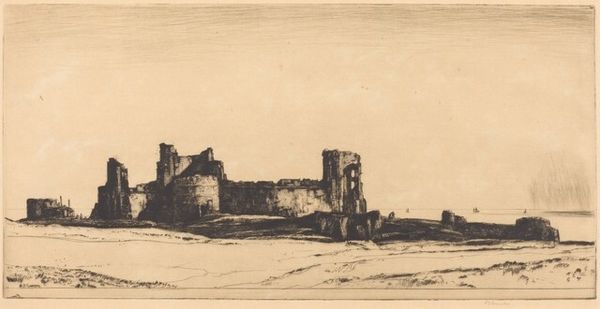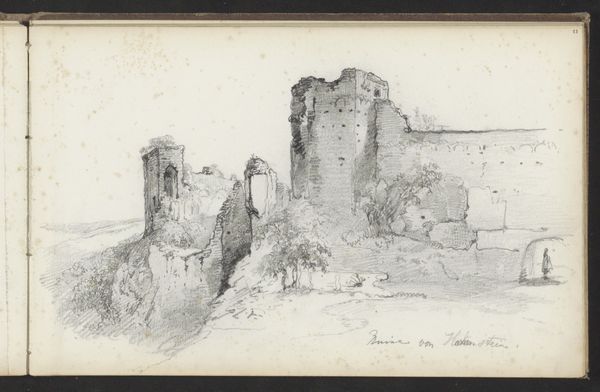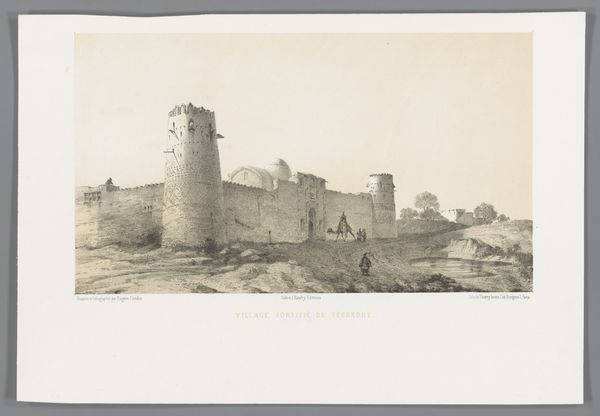
print, etching
# print
#
etching
#
landscape
#
etching
#
romanticism
#
history-painting
Dimensions: 107 mm (height) x 174 mm (width) (plademaal)
Vilhelm Kyhn made this etching of Hammershus on Bornholm. Kyhn completed this etching around 1849, during a period of national awakening in Denmark. Following the Napoleonic Wars, artists turned their attention to local landscapes and historical monuments like Hammershus, as a way of defining a shared cultural identity. The etching's aesthetic is rooted in romanticism, emphasizing the sublime and awe-inspiring qualities of nature, but also has to do with historical preservation. Hammershus, a medieval fortress, stands as a symbol of Denmark's past, a reminder of its struggles and triumphs. The artist's decision to depict the fortress in ruins may reflect on the changing times and the transient nature of power, but also as a site of national heritage. Understanding this artwork requires researching the history of Hammershus. We can consider its architectural style, its role in past conflicts, and its significance in local folklore. Only by researching its history can we truly appreciate the cultural resonance of this etching.
Comments
No comments
Be the first to comment and join the conversation on the ultimate creative platform.
